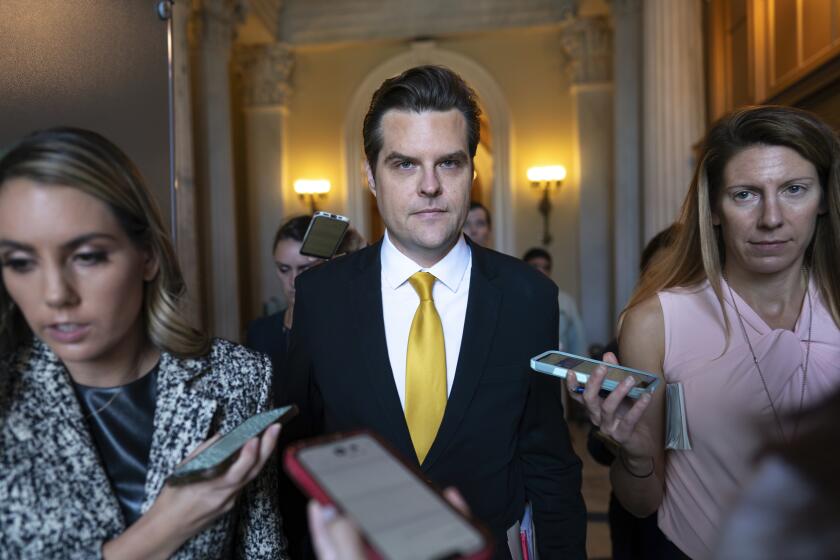The foes of Proposition 30 overstate their case
Opponents of Gov. Jerry Brownâs proposed tax increase are doubling down in their latest commercial, offering not one but two whoppers about what Proposition 30 would do.
The measure would increase the state sales tax by 0.25 percentage points and raise the income tax by 1 to 3 percentage points on individuals earning more than $250,000 (and couples earning more than $500,000), generating about $6 billion a year. The money would go into a special fund for public schools and community colleges. At the same time, it would allow the Legislature to take about $3 billion from the General Fund that would have been spent on education and redirect it to other priorities.
The new commercial by the No on 30 -- Californians for Reform and Jobs, Not Taxes campaign features a woman in blue standing at what appears to be a kitchen counter, with two kids sitting at a table in the background doing homework. She looks at the camera and says, âWe all want better schools, so Prop. 30 seemed OK.â So far so good.
ENDORSEMENTS: The Timesâ recommendations for Nov. 6
But then the truth-stretching begins. First she says the tax would hit everyday purchases, including gasoline. But the Legislature exempted gasoline from sales taxes in 2010, so it wouldnât be affected by the increase. The No on 30 campaign argues that the statutory exemption would be overridden by Proposition 30âs constitutional changes. But thatâs nonsense; nothing in the proposition suggests any changes to the lengthy list of items not subject to taxation.
The woman in blue then says that ânot a pennyâ would be âguaranteed to the classroom.â Although itâs true that not every dollar raised by Proposition 30 would go to education, the stateâs Legislative Analyst says the measure would raise the schoolsâ âguaranteeâ of funding âby billions of dollars each year.â Thatâs because of Proposition 98, which requires roughly half of the money raised by the state to go to schools and community colleges.
But would the money raised by Brownâs measure actually reach the classroom? Yes it would, albeit without the kind of certainty (and strictures) that Proposition 38 would provide. Proposition 30 would let local districts decide how to spend the additional dollars, with this crucial caveat: they âshall not use any of the funds ... for salaries or benefits of administrators or any other administrative costs.â They also have to make the decision at a public meeting, and publish a report online accounting for how they spend the money.
Beyond that, the measure would avert $4.6 billion in cuts this fiscal year to public schools, as well as more than $1 billion in cuts to higher education and other state priorities that are scheduled to take effect if Proposition 30 fails. Thatâs because the current state budget assumes the measure will pass and its revenue will be available.
Iâll close by quibbling with one other statement in the commercial, that âProp 30 makes our sales tax the highest in the nation.â The state-imposed portion of the tax -- 7.25% -- is already the highest in the nation, according to the Tax Foundationâs statistics. But more than a third of that money goes to local transportation, public safety, health and social programs to offset the effects of Proposition 13âs limit on property taxes.
Brownâs measure presents a clear choice for voters: Do they want to raise taxes to increase funding for schools and other state programs, or do they just want to keep cutting? Evidently the No on 30 campaign doesnât think it can win without muddying the waters.
ALSO:
McManus: Applying the âground gameâ
Photos: Six numbers to ignore from the presidential campaign
Follow Jon Healey on Twitter @jcahealey
More to Read
A cure for the common opinion
Get thought-provoking perspectives with our weekly newsletter.
You may occasionally receive promotional content from the Los Angeles Times.











